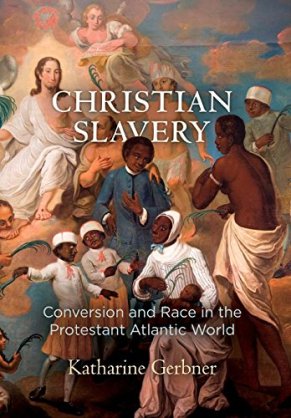 *This review was originally published over at The Englewood Review of Books. If you have a few minutes, please go check out some of their other reviews.
*This review was originally published over at The Englewood Review of Books. If you have a few minutes, please go check out some of their other reviews.
Katharine Gerbner’s Christian Slavery is a meticulously researched, insightful, and at times haunting read—haunting because it feels like the past is always with us. First and foremost, this is an academic work of religious history, but as Gerbner goes into the historical roots of, to use Jonathan Wilson-Hartgrove’s phrase, “slaveholder religion,” the book’s significance doesn’t seem confined to the past. Throughout its pages, Gerbner endeavors to trouble accounts of this historical period that overly-focus on searching for possible early precedents of the 19th century antislavery movement. She argues that it’s significant to acknowledge and recognize that the history of early Protestant missionary efforts unfortunately includes both ideological accommodation to slavery as well as struggle against it (3-4).
In terms of scope, Gerbner spends most of the book’s pages exploring the dynamics of Atlantic Protestantism in the seventeenth and early eighteenth centuries, tracing especially the entanglement of Anglicans, Quakers, and Moravians in the African slave trade (3-4). Near the heart of her subject is an examination of the changing ways in which people in these societies thought about the relationships between Protestant identity, freedom, and slavery. In these societies, Gerbner tells readers, owners were often deeply set against allowing slaves to become Christians and participate in religious rites such as baptism or communion. She explains that this was the case because, “In these colonies, Anglican, Dutch Reformed, and Lutheran slave owners conceived of their Protestant identities as fundamental to their status as masters” (2). This ideology of “Protestant Supremacy,” as she calls it, was undercut by the conversion of African slaves to Christianity. Gerbner suggests how this helped lead to the formation of White Supremacist ideology by noting that: Continue reading
